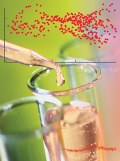More science news snippets from Sciencebase:
- CRISPR X-rays – New on my SpectroscopyNOW column – "It would be exciting if a CRISPR-like system could be transferred into mammalian cells," Doudna told us, "where it might be engineered to silence the expression of deleterious host cell genes, or genes encoded by viral or bacterial pathogens. If this were possible, it could avoid complications of using the RNA interference (RNAi) pathway intrinsic to mammalian cells, which is currently the focus of many biotechnology and pharmaceutical companies."
- Calculating chemists – New on my SpectroscopyNOW column – A new approach to the calculation of NMR spectra could help organic chemists identify stereoisomers of small, but complex molecules, much more quickly according to theoretical chemists at Cambridge University.
- A comet’s tale – New on my SpectroscopyNOW column – Ab initio molecular dynamics simulations and detailed analysis hint at how conditions on the early earth might have been ripe for a cometary impact to generate small organic molecules. The study suggests that the formation of molecules akin to the simple amino acid glycine may have been viable. Follow-up spectroscopic studies may demonstrate the validity of the hypothesis.
- Just launched: Wellcome Digital Library – The Wellcome Library announced an ambitious plan to develop a world-class digital resource for the History of Medicine. The core of this resource will be digitised content from the Library's own holdings, although funding will also be made available to others to digitise complementary collections for inclusion in the digital library.
- Scientia Pro Publica blog carnival – The 39th edition of Scientia Pro Publica! This blog carnival showcases the finest science, medical and environment writing published in the blogosphere
- Last nail in the coffin for mercury-autism hypothesis? – There is no link.
 The latest issue of SpectroscopyNOW is online. This week I cover everything from MRI for testicular cancer to egg-shaped carbon balls by way of energy molecules, copper proteins, secret writing, first up a forensic science test for distinguishing saliva deposits from other substances at a crime scene:
The latest issue of SpectroscopyNOW is online. This week I cover everything from MRI for testicular cancer to egg-shaped carbon balls by way of energy molecules, copper proteins, secret writing, first up a forensic science test for distinguishing saliva deposits from other substances at a crime scene: